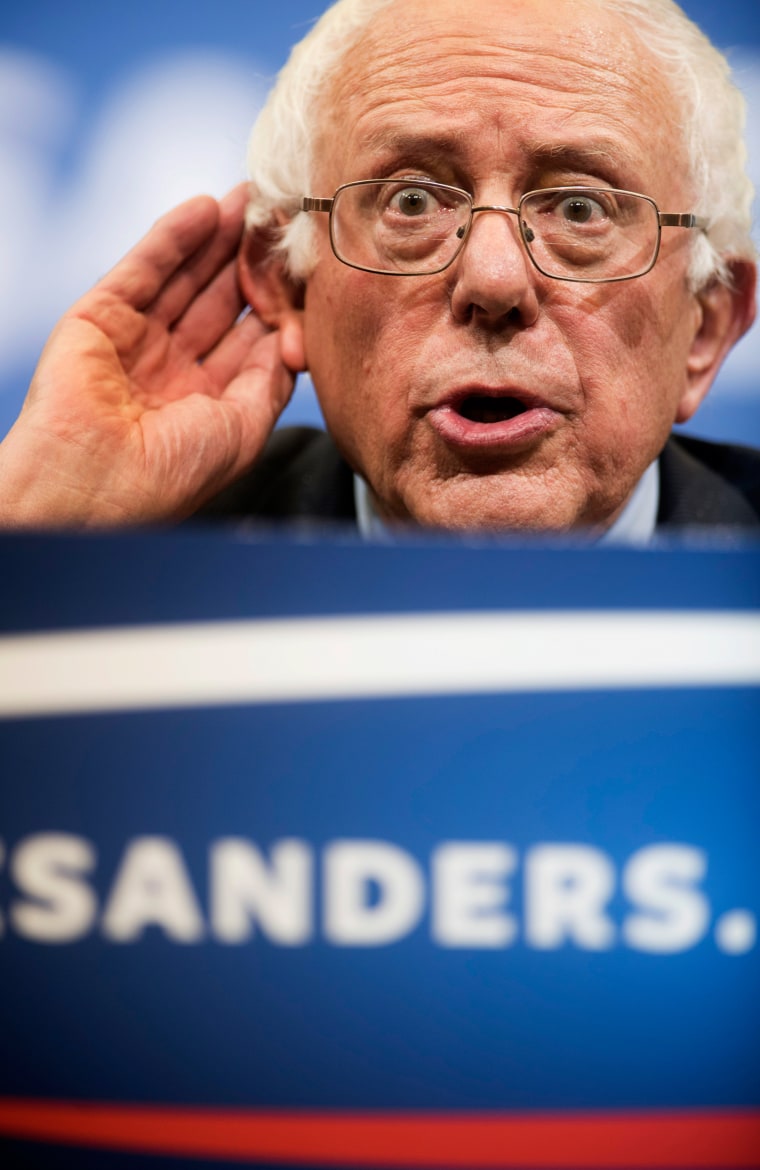With his huge crowds, crusading message and even a “Saturday Night Live” assist from Larry David, Bernie Sanders has been one of the best stories of the 2016 presidential election.
But that also might not be enough to defeat Hillary Clinton, according to findings from the new NBC News/Wall Street Journal poll.
Sanders made great strides during the year to transform himself from a virtually unknown candidate to a plausible threat to Clinton’s march to the Democratic nod. A majority of Democratic primary voters now say they can see themselves supporting him – compared to just 21 percent who said the same at the beginning of the spring. Last year, more than half of Americans didn’t know his name; now, more than 80 percent can offer an opinion of him.
But despite those gains, Clinton leads the Democratic primary race by nearly 20 points, registering 56 percent to Sanders’ 37 percent. And the numbers within key Democratic coalition groups are even more dramatic.
Among Democratic women, Clinton's advantage grows to 63 percent to Sanders’ 30 percent. Among non-white Democrats, it’s 64 percent to 29 percent. And among those over 50, Clinton garners 64 percent support, compared to Sanders’ 28 percent.
In fact, there are only two major subgroups among Democratic primary voters that back Sanders over the former secretary of state: Voters under 50 (48 percent for Sanders, compared to 46 percent for Clinton) and those who identify as independent or Republican-leaning rather than as traditional Democrats. Among Democratic men, the two candidates are essentially tied.
Perhaps most striking – and reflective of Clinton’s underlying advantages – is her lead even among voters who say they value Sanders’ core message about an economic system that is “rigged” in favor of the rich.
The poll asked respondents if they are more concerned “that the wealthy are rigging the system for the rich and leaving the rest of us behind” or that there is "diminishing opportunity for average people to achieve economic stability.” Clinton led even among those Democratic primary voters who chose the “rigging the system” option, 52 percent to 45 percent, although her lead over Sanders was much greater with those who chose the “diminishing opportunity” response, (62 percent for Clinton compared to 27 percent for Sanders.)
Sanders also performs relatively well with voters who agree with the statement that the United States “cannot be the world’s policeman,” with 43 percent of those Democrats backing Sanders compared to 52 percent for Clinton.
But among Democrats who say that “America has not been strong enough,” the former secretary of state has a huge advantage, winning those primary voters 66 percent to 24 percent.
Sanders has surely built an impressive base of supporters, and he's gained steam in recent months. In October, he trailed Clinton by 31 percent, compared to his 19 point deficit now. He's also performing better in key state polls, particularly in New Hampshire, than in national surveys.
But without a major shakeup in the 2016 race, his fascinating and important coalition may face too tough a challenge on the national scale to notch a primary victory against the Democratic frontrunner.

